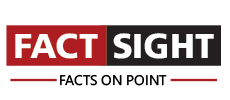
Pigments are chemical compounds that give color to any material, even to human tissues. In the paints and coatings industry, they are usually used with water, oil or other bases to produce paints and similar products. Pigments are totally different from phosphorescent, fluorescent and luminescent materials, which emit light. At ambient temperature, the material is stable in solid form. For applications, such as industrial or arts, the properties such as stability and permanence are desirable. Pigments which do not show permanence are called fugitive. Fugitive pigments fade over time or due to exposure to light.
There are mainly two types of pigments – inorganic and organic. Inorganic pigments account for major share in the global pigments market, as they are appropriate for a wide range of applications. Inorganic pigments and organic pigments can be distinguished depending on their chemical composition. Organic pigments are carbon based pigments, while inorganic pigments are generally metallic salts. These two types can also be combined at times to get pigments of required property. Organic pigments show higher color strength and gloss than inorganic pigments; however, they have lower coverage. Organic pigments are more expensive than inorganic pigments. These pigments are used as printing ink, paints and plastics. Sometimes, pigments can also be produced from a dye by precipitating a solvable dye with a metallic salt. The pigments produced from this method are called lake pigments. Biological pigments can be used for all colored substances independent of their solubility.
The key opportunity witnessed in the global pigments market is increasing use of nanoparticles. Nanoparticles are generally made by the method of grinding process. In grinding process, high pressure homogenization is used in the pharmaceutical industry and bead milling is used in the pigments industry. A better form of camouflage can be produced by the injection of mobile pigments nanoparticles into the material. The mobile pigments particles can change uniform color according to the area and are being used for various military operations as well. A lot of research is still being done on this self-changing camouflage. Various factors such as increasing government expenses on pharmaceutical research and development in emerging economies, continuous advancements in nanoparticle analysis technologies, and increasing focus on nanotechnology research are fueling the demand for nanoparticle analysis instruments, which will in turn fuel the demand for pigments.
Geographically, the European pigments market is expected to witness moderate growth during forecast period. In Europe, the pigments market has seen increase in revenue from printing and ink segment. The need for special chromatic colors and high class pigments in automotive sector is further expected to increase the demand of pigments in this region.
Some of the major competitors in the global pigment market include BASF SE, E.I. du Pont de Nemours and Company, Lanxess AG, Huntsman International LLC., Sun Chemical Corporation, Zhejiang Longsheng Group Co. Ltd., Clariant International Ltd., ECKART GmbH, Dainichiseika Color & Chemicals Mfg. Co. Ltd., Kronos Worldwide Inc., and others.

